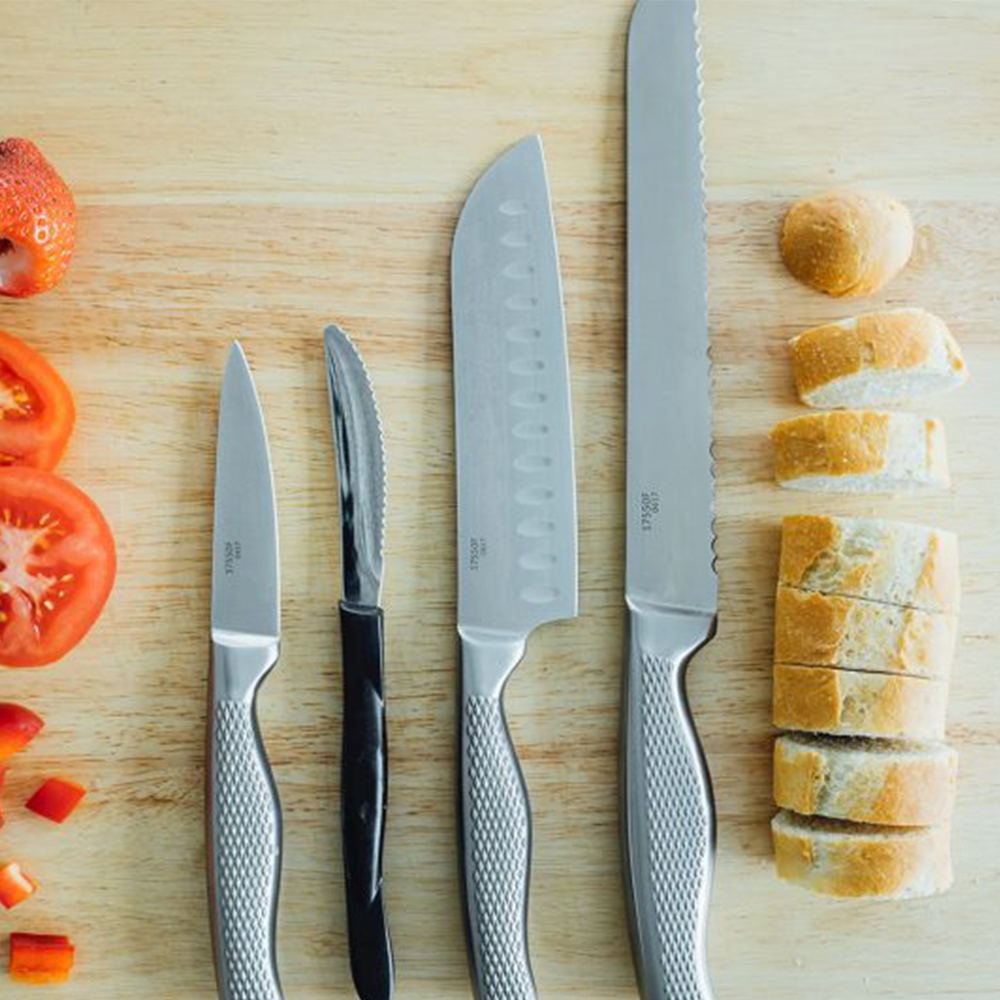It’s time to toss the boning knife and meat cleaver taking up space in your kitchen drawers! We prefer to keep things simple, easy, and clutter-free with just a few knives that are versatile workhorses.
We’ve rounded up the four most essential kitchen knives every home cook needs, and the best way to use each.
1. Chef’s Knife
If there is only one knife you can have on hand, make it a chef’s knife. This all-purpose knife is every home cook’s best friend. A chef’s knife comes in multiple sizes, but 8” is the standard and meets most all chopping needs. A large, sturdy wooden cutting board is best when working with a chef’s knife.
When shopping for a chef’s knife, look for high-carbon steel blades and a handle that feels comfortable in your grip. Two go-to styles for a chef’s knife include:
- Santoku: A hollow-blade Asian knife
- Chef’s Knife: A German-made blade designed for precision and durability
Use it for: All kinds of food prep like brunoise, slender chiffonade cuts of herbs and greens, chopping, cubing, julienne cuts, and dicing. Not recommended for slicing soft foods or for small, precise tasks, like peeling.
2. Paring Knife
A paring knife is essentially a miniature chef’s knife, with a blade that usually measures between 2.5” and 4”. The small blade allows for a high level of precision, control, and accuracy. A paring knife is the only one you can use without a cutting board — the knife and the food may sometimes be held up while you work (as in, peeling potatoes).
Steel is the most common material for a paring knife blade, though some paring knives are made from ceramic. Some cooks prefer ceramic for its affordability and durability.
Use it for: Peeling hand-sized fruits and veggies like apples, mangoes, kiwi and potatoes; hulling strawberries; and deveining shrimp and boning fish.
3. Serrated Paring Knife
While a regular paring knife can tackle many small jobs, there are a few everyday tasks that are made easier and quicker with the little scalloped curves of a serrated paring knife. For most versatility, pick a serrated paring knife with a blade between 3.25” and 4”, and beware of very cheap (and cheaply-made) paring knives that may require frequent replacements or cause accidents.
Use it for: Supreming, segmenting, and cleaning bits of pith from citrus fruits; halving small tomatoes; coring apples; scraping out seeds from a vanilla pod; slicing small rolls, bagels, or other breads.
4. Bread Knife
A large serrated knife is the only tool to use for cutting large loaves of bread, cakes or other baked goods. When using a bread knife, employ a “sawing” motion to avoid crushing tender-textured loaves.
While serrated knives can’t be sharpened with a traditional honing steel, most kitchen stores and some supermarkets offer professional knife sharpening services which can accomodate serrated blades.
Use it for: Cutting loaves of artisan bread and baguettes, slicing cakes, cutting up large tomatoes, and breaking down cantaloupe and other melons.
No matter which knife you choose, make sure that all of your blades are well sharpened and cleaned — and always cut on a cutting board to preserve the blade and your countertops.

